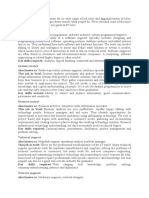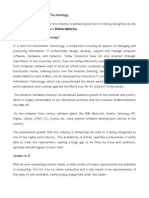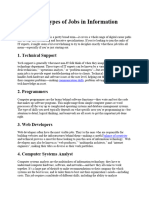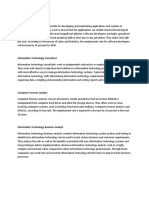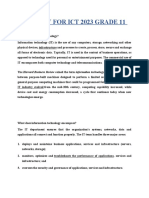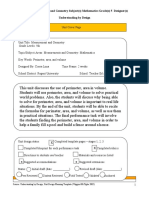0% found this document useful (0 votes)
27 views7 pagesSP Script
The document outlines various careers in Information and Communication Technology (ICT), detailing roles such as Analyst Programmer, IT Manager, and IT Security Specialist, among others. It emphasizes the importance of technical expertise, problem-solving skills, and adaptability in the IT field. Additionally, it highlights the distinctions between roles, such as the focus of an Analyst Programmer on design versus a Programmer's emphasis on coding.
Uploaded by
carolinoelynCopyright
© © All Rights Reserved
We take content rights seriously. If you suspect this is your content, claim it here.
Available Formats
Download as DOCX, PDF, TXT or read online on Scribd
0% found this document useful (0 votes)
27 views7 pagesSP Script
The document outlines various careers in Information and Communication Technology (ICT), detailing roles such as Analyst Programmer, IT Manager, and IT Security Specialist, among others. It emphasizes the importance of technical expertise, problem-solving skills, and adaptability in the IT field. Additionally, it highlights the distinctions between roles, such as the focus of an Analyst Programmer on design versus a Programmer's emphasis on coding.
Uploaded by
carolinoelynCopyright
© © All Rights Reserved
We take content rights seriously. If you suspect this is your content, claim it here.
Available Formats
Download as DOCX, PDF, TXT or read online on Scribd
/ 7




